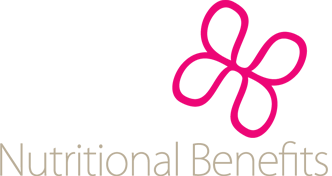Start now to get in shape for summer
May 14, 2014

It’s May, and there are a couple of months left until the summer holidays are upon us, so it’s time to start thinking about how you’re going to look, and more importantly feel, on the beach in the summer months.
There is apparently a heat-wave on the way, so it’s perhaps time to shed those layers and get some sunshine on your skin, but perhaps the colder months have taken their toll on your weight, your wellbeing and so your general appearance? Fear not, below is some general advice on nutrition and exercise, and I will be posting frequently over the next couple of months with lots of seasonal advice on how to feel great so you can make the most of that fabulous summer holiday you’ve booked.
Your key goal for summertime happiness should be to detox and reach your ideal weight through good nutrition and exercise, so you look and feel great, and are glowing and well for that beach holiday!
How best to lose weight?
In order to lose weight you should exercise in conjunction with a good diet. This is because exercise not only burns calories and converts fat into energy, but it also increases your metabolism thereby increasing your ability to burn calories.
If you want to lose weight, you need to combine eating less (and more healthily), with doing exercise. This creates a calorie deficit which your body responds to by using the extra energy your body has stored (fat). What you have to ensure is that there’s a balance between the two so that the results you want are realistic and achievable. It’s realistic to target a weight-loss of up to 2lbs a week, so if you get started in May, it would be very reasonable to target a 1 stone weight loss before your beach holiday.
What type of exercise is best?
It should be a combination of cardio-vascular and weights. Dog walking and the occasional game of tennis make you feel great, but it’s time to re-acquaint yourself with (or get introduced to) your personal trainer, and build in some structured cardio-vascular and weights work to your weekly routine. Weights used could be your own bodyweight, dumbbells, barbells or kettlebells, and you need to be able to feel that you’re doing something otherwise there will be no benefit.
How often should I exercise?
This depends on how much weight you have to lose, and your current fitness levels. If you’re inactive then you should initially be doing up to 30 minutes daily. As fitness levels increase then so should time spent, up to 45 minutes to 1 hour, but with reduced frequency of 3 – 5 times a week. All exercise should be of moderate intensity (i.e. you can hold a broken conversation).
I don’t want to get big muscles!
Don’t worry about this; big muscles will only occur with the appropriate type of training and by increasing your protein intake. Exercise will make your muscles stronger, leaner and fitter. Exercise does not turn fat into muscle, but will consume it as an energy source. Having leaner muscles will increase your metabolic rate, so that your body’s ability to burn calories/fat increases. Exercising will also help your bones, tendons and cartilages as well as your heart and lungs.
I want to lose weight from…
Unfortunately it’s not possible to spot weight loss because the body doesn’t work like that. However certain food groups have a reputation for retaining fat or water in the body and certain medicines do likewise. You will burn fat more readily from the areas that can perform big movements (arms and legs) but these big movements will help you lose weight from other parts of the body.
My weight loss has plateaued, what can I do?
You may need to do one or both of the following: the first may be to tweak or change your diet; the second is to change your exercise regime to reflect the changes in your body and its fitness levels.
Remember: Muscle weighs more than fat. Over time you may see your weight loss slow, but in fact you are continuing to lose fat whilst building lean muscle, helping you feel lighter, more toned and looking great – that all important summertime goal!
How does diet fit in?
This is an area of specialism for Nutritional Benefits, and I have helped many clients reach their target personal weights over the years, some losing as much as 5-6 stone.
You might be wondering which kind of weight-loss plan to go for and you might be confused by lots of conflicting advice. I think you need to ask yourself a few questions before embarking on a weight-loss plan:
- Do you know your numbers? Your percentage body fat, muscle mass, BMI?
- Do you know what is a healthy weight for you? Be realistic when setting this goal; you may never get back to your wedding weight in your forties or fifties after having children.
- What is your relationship with food? Do you comfort eat? Do you punish or reward yourself with food?
- Is your mind in the right place to stick to an eating/exercise plan? If you are stressed at the moment it might not be the right time.
- Does your lifestyle mean you need a flexible plan or can you easily stick to a rigid plan?
- Do you do the cooking in your house?
These are all factors that help you to decide what plan is best for you. Once you have chosen a plan you need to commit to it and you need to eat as healthily as possible on it rather than looking for ways to cheat! You must not try to combine multiple plans; do one and do it well.
Your body will naturally lose weight when it is in balance and when it is being fed the right nutrients: carbs, proteins, fats, water.
My favourite plan is Metabolic Balance www.mb.nutritionalbenefits.co.uk , followed by a Low GL plan. I think intermittent fasting works for some people, especially shift workers, as it can help to reset their body clock between shift patterns. And a short juice fast can kick start any weight-loss programme. You should stick to real food wherever possible and use fresh unprocessed ingredients, importantly, make every mouthful count.
Although I’ve mentioned above that it’s not possible to target weight-loss from a particular part of the body, fat does get laid down in different places for different reasons; the legs and tummy tend to be hormonal, whereas around the middle tends to be stress related. If you can also address the underlying issues as you begin your weight-loss journey, the fat can start to go, and stay off for the long-term. I will write about some of these underlying issues and how to manage / tackle them in forthcoming posts.
And one final thought: Diet and exercise together are ALWAYS better than either on their own.
If you’re looking for structured help to reach your summer-time goals, there’s just about time to fit in a Metabolic Balance programme; contact me to discuss the wide ranging health benefits, with the fabulous ‘side-effect’ of measurable weight loss.
Laura de la Harpe is a qualified, professional nutritional therapist, and one of only a limited number of qualified Metabolic Balance® coaches in the UK. Through the application of nutrition science, and an understanding of how the body works, Laura supports her clients through a nutritional change programme that brings improved health, weight loss and relief from a range of symptoms. Change your life… one mouthful at a time.
Contact or follow Laura ?www.nutritionalbenefits.co.uk ? 0118 946 4773 ?facebook /metb4life ?twitter @metb4life
Specific results are not guaranteed. Results of each nutrition programme may vary.






